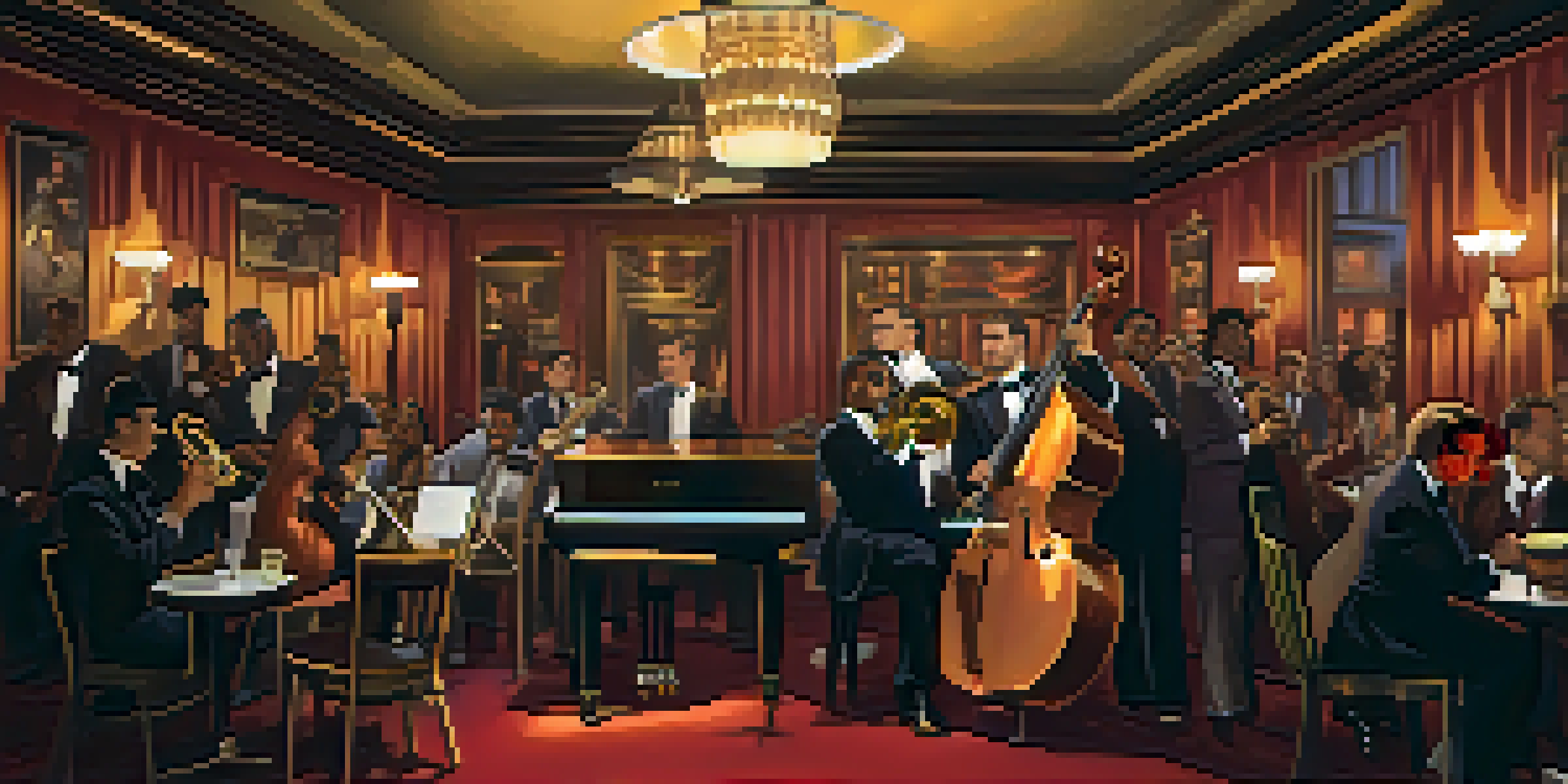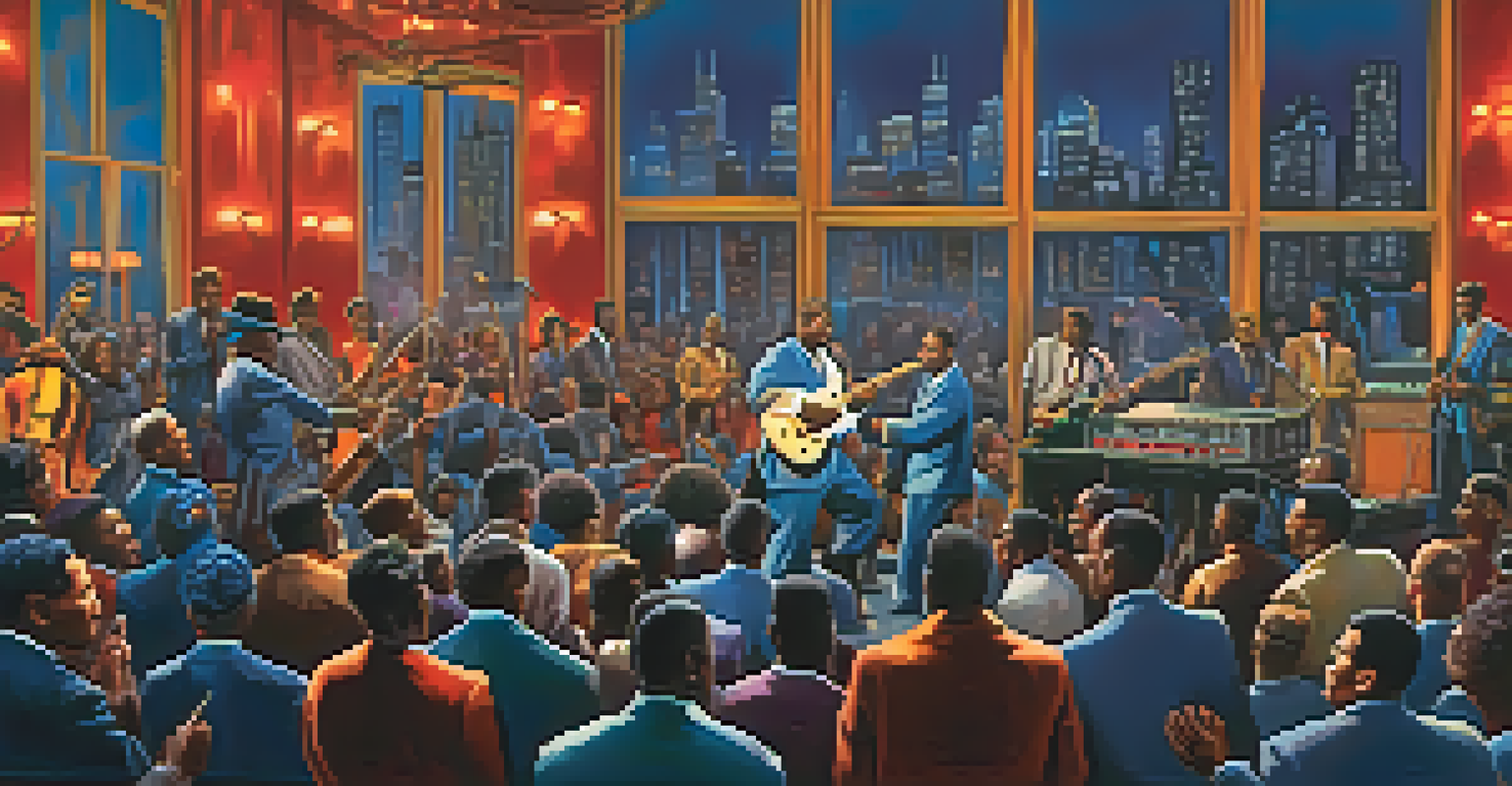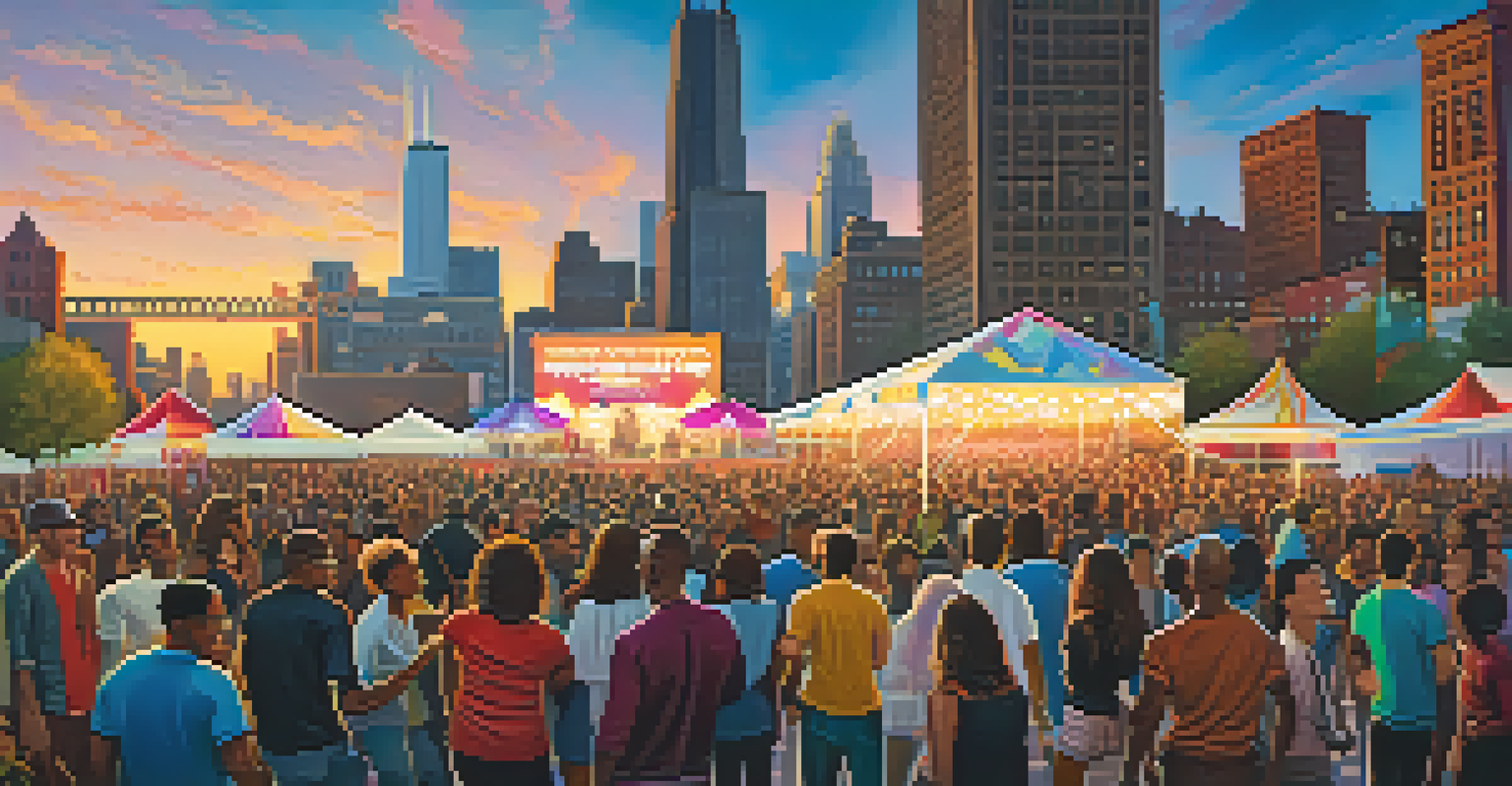The Chicago Sound: Merging Genres Through the Decades

The Roots: Chicago's Musical Heritage in the Early 20th Century
In the early 1900s, Chicago emerged as a vibrant hub for music, particularly jazz and blues. Artists like Louis Armstrong and Muddy Waters laid the groundwork for what would become known as the Chicago sound. These genres were deeply influenced by African American history and culture, making Chicago a melting pot of rich musical traditions.
Chicago is a city of neighborhoods. The music reflects the diversity of the neighborhoods and the people in them.
The city's bustling nightlife and speakeasies during Prohibition created spaces where these genres could thrive. The interaction between musicians from different backgrounds led to innovative sounds that would shape the landscape of American music. This early fusion set the stage for the genre-blending that would continue throughout the decades.
As musicians began to experiment with their craft, they incorporated elements from various genres, giving rise to a unique Chicago identity. This spirit of collaboration not only enriched the local music scene but also attracted attention from national audiences, paving the way for future generations of artists.
The Golden Age: The Rise of Chicago Blues in the 1950s
The 1950s marked a significant turning point for Chicago blues, a genre that became synonymous with the city. Artists like Howlin’ Wolf and Buddy Guy transformed the traditional Delta blues into a more electrified and urban sound. This evolution was fueled by the availability of electric instruments and the city's industrialization, which inspired new themes in the music.

As blues musicians began to incorporate elements of rock and roll, a new genre was born. The combination of strong guitar riffs, driving rhythms, and soulful vocals created a sound that resonated with a broader audience. This era not only solidified Chicago's place in music history but also laid the groundwork for future rock legends.
Chicago: A Musical Melting Pot
Throughout the decades, Chicago has served as a vibrant hub for diverse musical genres, blending influences from jazz, blues, rock, and hip-hop.
The Chicago blues scene became a breeding ground for innovation, with musicians collaborating and pushing the boundaries of the genre. This vibrant atmosphere inspired countless artists, leading to a rich tapestry of sound that reflected the diverse experiences of those living in the city.
The 1960s: Folk, Rock, and the Chicago Sound Explosion
The 1960s brought about a cultural revolution, and Chicago was at the forefront of this change. The folk and rock scenes began to intermingle, with local artists experimenting with new sounds and lyrical themes. This period saw the rise of influential bands like The Chicago Transit Authority, which later became Chicago, blending rock with jazz and pop elements.
The blues is a tonic for whatever ails you. I could play the blues and feel better.
As the counterculture movement gained momentum, Chicago's music scene became a hub for social and political expression. Artists used their platforms to address issues like civil rights and the Vietnam War, infusing their music with powerful messages. This blend of activism and artistry captured the hearts of many and fostered a sense of community among musicians and fans alike.
The experimentation of this era set the stage for more genre-blending in the years to come. Chicago's unique sound continued to evolve, embracing influences from jazz, blues, and rock while remaining grounded in the city's rich musical roots.
The 1970s: Disco, Funk, and the Urban Groove
As the 1970s rolled in, Chicago's sound began to shift yet again, embracing the disco and funk movements that were sweeping the nation. Bands like Earth, Wind & Fire emerged, showcasing a fusion of jazz, soul, and funk that would captivate audiences both locally and globally. Their infectious rhythms and elaborate horn arrangements exemplified the city’s innovative spirit.
The dance culture of the era also played a significant role in shaping Chicago's music scene. Clubs and venues became epicenters of nightlife, where DJs and musicians collaborated to create unforgettable experiences. This environment fostered a sense of community, further blending genres and pushing the boundaries of traditional music.
The Evolution of Chicago Blues
In the 1950s, Chicago blues transformed into a powerful urban sound, thanks to artists like Howlin’ Wolf and Buddy Guy, who electrified traditional Delta blues.
Chicago's ability to adapt and incorporate diverse influences solidified its reputation as a musical powerhouse. The seamless melding of funk, soul, and disco created a vibrant soundscape that resonated with listeners and inspired countless artists to explore new creative avenues.
The 1980s: Punk, New Wave, and the Edge of Innovation
The 1980s saw Chicago become a breeding ground for punk and new wave music, as artists sought to break away from mainstream conventions. Bands like the Naked Raygun and Ministry redefined the city's sound by blending punk energy with electronic and industrial influences. This era marked a departure from the established norms, allowing for a more experimental approach to music-making.
The iconic venue, The Metro, became a focal point for emerging talent, hosting acts that would go on to achieve national fame. The sense of camaraderie among local musicians fostered an environment of innovation, where genre boundaries were continuously challenged. This collaborative spirit became the hallmark of Chicago's music scene during this transformative decade.
As the city embraced this new wave of creativity, it further solidified its status as a cultural hotspot. Chicago's ability to merge genres not only enriched its local scene but also left an indelible mark on the broader music landscape, inspiring future generations of artists.
The 1990s: Hip-Hop and the Expansion of Chicago's Sound
In the 1990s, Chicago's music scene experienced a significant transformation with the rise of hip-hop. Artists like Common and Kanye West emerged from the city's vibrant neighborhoods, bringing a fresh perspective to the genre. Their unique blend of lyrical storytelling and innovative production techniques showcased the rich tapestry of experiences within the city.
The fusion of hip-hop with jazz and soul elements created a distinctive sound that resonated with audiences both locally and nationwide. This era marked a departure from traditional hip-hop, as Chicago artists began to experiment with their sound, incorporating influences from other genres. The city's music scene became a reflection of its diverse culture and history.
Modern Genre-Blending in Chicago
The 2000s and beyond have seen Chicago's music scene embrace a mosaic of styles, with artists like Chance the Rapper reflecting the city's dynamic cultural landscape.
Chicago's hip-hop movement not only gained traction within the music industry but also sparked conversations about social issues and identity. As artists used their platforms to address inequality and injustice, they further cemented Chicago's role as a vital player in the evolution of contemporary music.
The 2000s and Beyond: A Contemporary Mosaic of Sounds
As we entered the 2000s, Chicago's music scene continued to evolve, embracing a wide array of genres and styles. From the rise of indie rock bands like Wilco to the soulful sounds of Chance the Rapper, the city became a melting pot of musical expression. This era saw artists drawing inspiration from the past while pushing the boundaries of their own creativity.
The advent of technology and social media further amplified Chicago's musical voice, allowing artists to connect with audiences on a global scale. The ability to share their work online led to a flourishing of diverse sounds, blending genres like never before. This democratization of music creation has opened doors for countless artists to share their unique stories and experiences.

Today, Chicago continues to be a vibrant hub for genre-blending, with a rich legacy that inspires new waves of musicians. The city’s ability to adapt and integrate influences from various genres ensures that the Chicago sound remains dynamic and ever-evolving, celebrating its past while embracing the future.